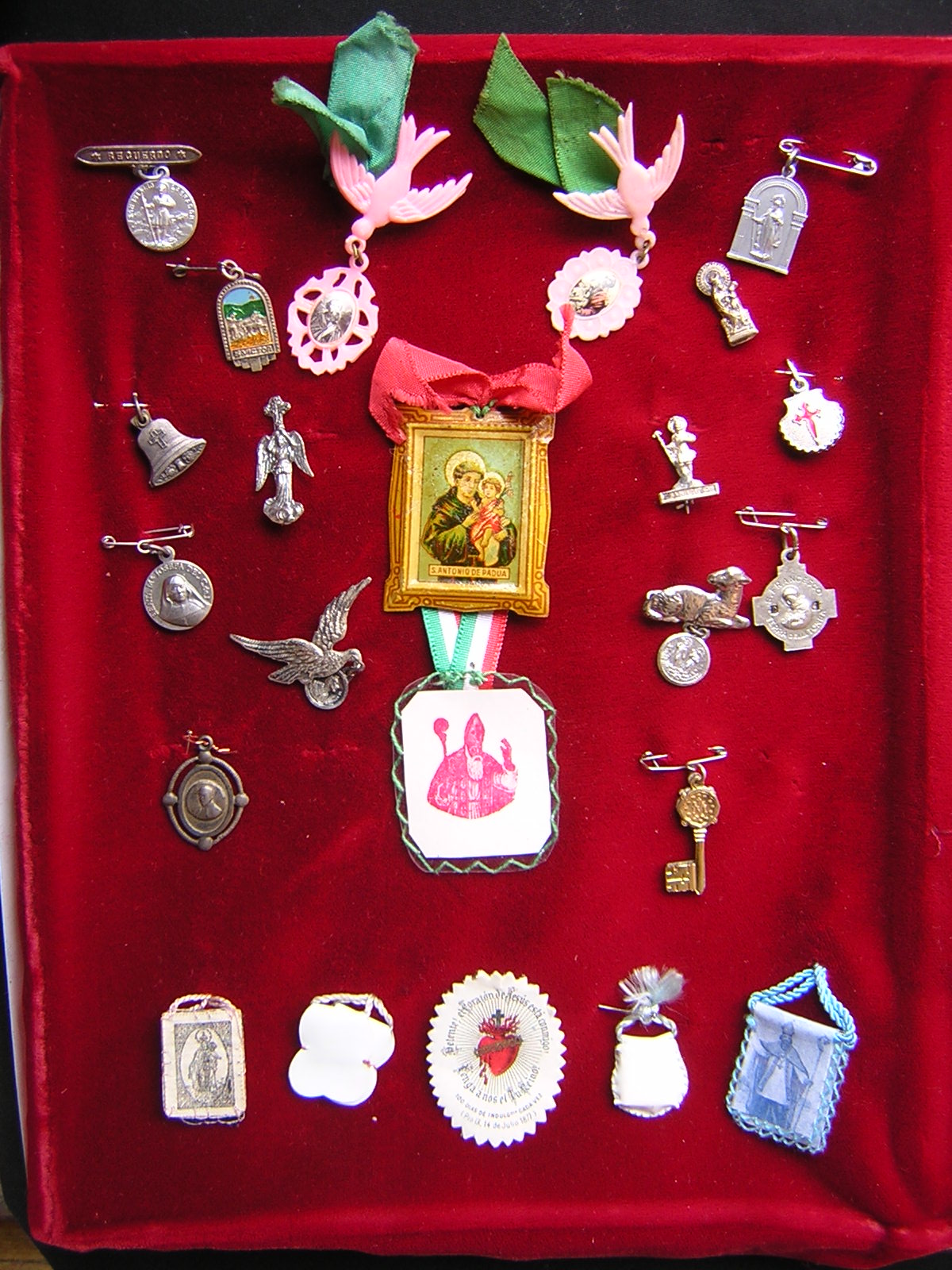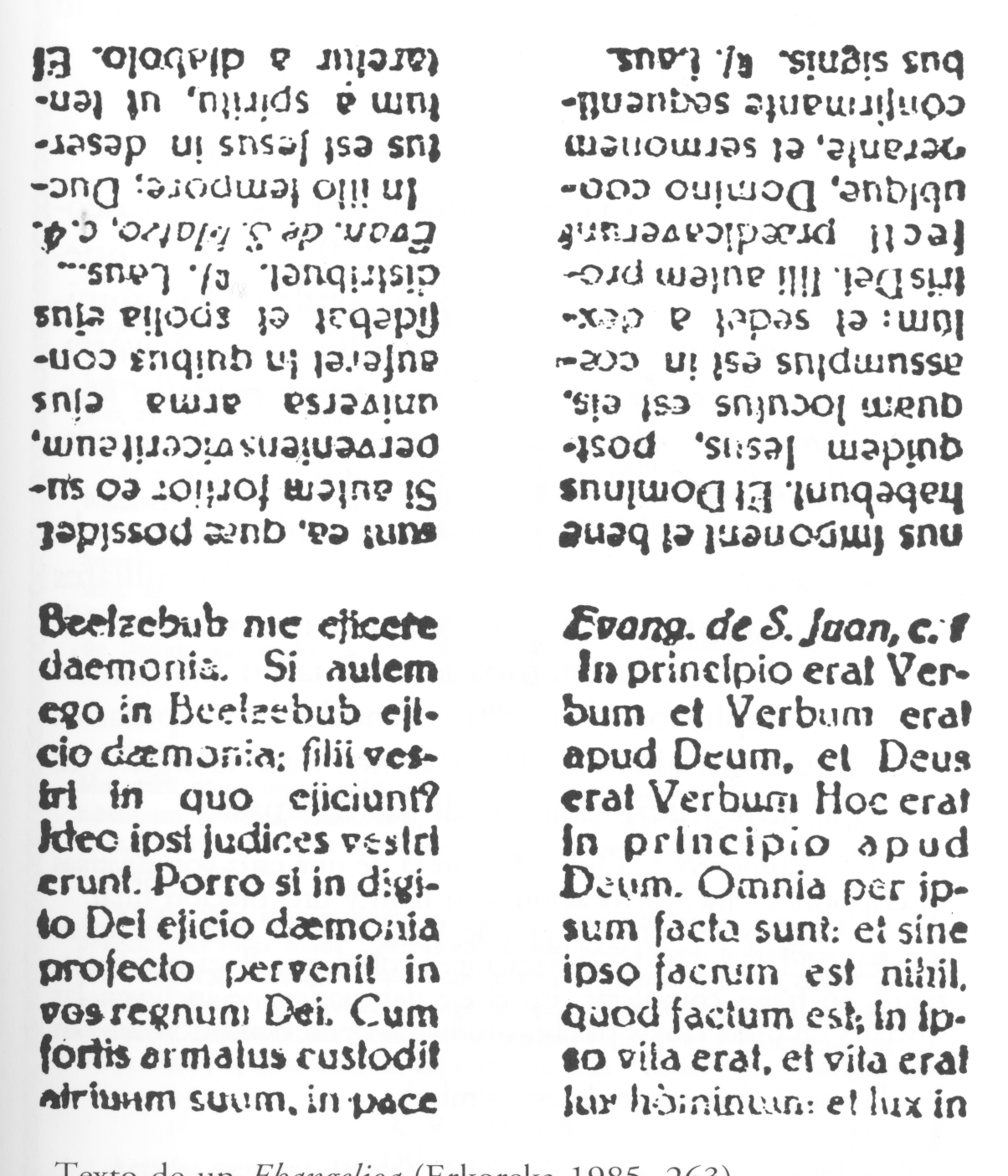Basque ethnography at a glance

Religious medallions and charms. Patxo Fernández de Jauregui. Labayru Fundazioa Photographic Archive.
The evil eye is an ancient superstitious belief well extended across the globe. This folk illness receives similar names in all languages worldwide: begizkoa in Basque, mal de ojo in Spanish, mauvais œil in French…, always referring to the human eye as responsible for it. The main mechanism for transmission is the malevolent power in the glance of some people to cast a curse on young children or vulnerable beings. Certain individuals are believed to project a mysterious energy with their eyes known as adurra in Basque. Envy and evil speaking or malediction, from Latin maledictio, along with several witchcraft rituals, can cause the same effect.

The beginning of John’s Gospel used as an amulet. Anton Erkoreka. Labayru Fundazioa Photographic Archive.
Amulets against the evil eye
An amulet is an object worn by the child or person as a shield to ward off the curse of the evil eye. The so-called evangelios or “gospels” were among the most popular and consisted of written portions of the Bible, generally the beginning of John’s Gospel (“In principio erat Verbum…”) or an account of Jesus expelling a demon, wrapped in fabric or cotton (plastic today) bags to either be worn as scapulars or attached to baby carriers. They were available at a number of sanctuaries and convents. Religious medals with the image of a virgin or a saint, Saint Benedict crosses, the Caravaca cross, figas, and other pendants fulfilled the same mission. Saliva was likewise used, and so were some stones, jet and corals among them, small bells… Other earlier amulets, already disappeared, included bags containing a piece of the child’s umbilical cord, chicken manure, plants such as celery or rue, ashes from the hearth, and so on.
Prevention rituals
The best known ritual for prevention has been the addition of a set phrase into the conversation whenever a flattering comment was delivered. If a compliment was paid to a handsome child, for instance, one should say “Jainkoak bedeinka daiala!” (May God bless him!) in order to repel the evil eye. In the case of domestic animals, a similar phrase was uttered to place it under the protection of a saint, usually Saint Anthony: “San Antoniok bedeinka daiala!” (May Saint Anthony bless it!).
Another ancient ritual involved spitting or pretending to spit in the direction of the person who gives the evil eye, for saliva was long thought to have magical properties. The election of godparents at christenings was sometimes left to chance also as a means of protection.
Anton Erkoreka – Etniker Bizkaia – Etniker Euskalerria Groups
Translated by Jaione Bilbao – Language Department – Labayru Fundazioa
References for further information: Popular Medicine, part of the Ethnographic Atlas of the Basque Country collection; and Erkoreka, Anton. Begizkoa. El mal de ojo entre los vascos. Bilbao: Ekain, 1995. https://www.ehu.eus/documents/1970815/2421082/Mal+de+Ojo+-+Begizkoa

